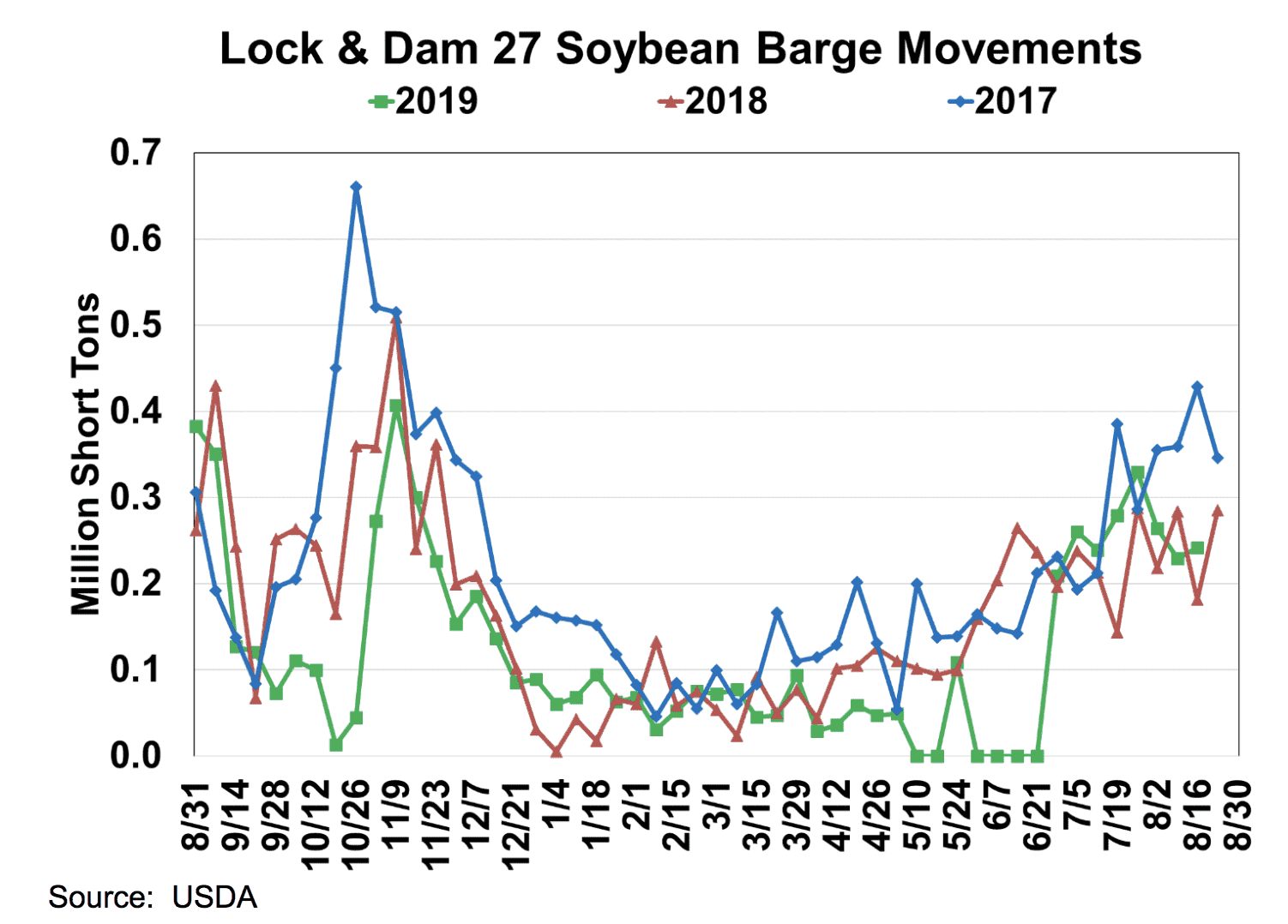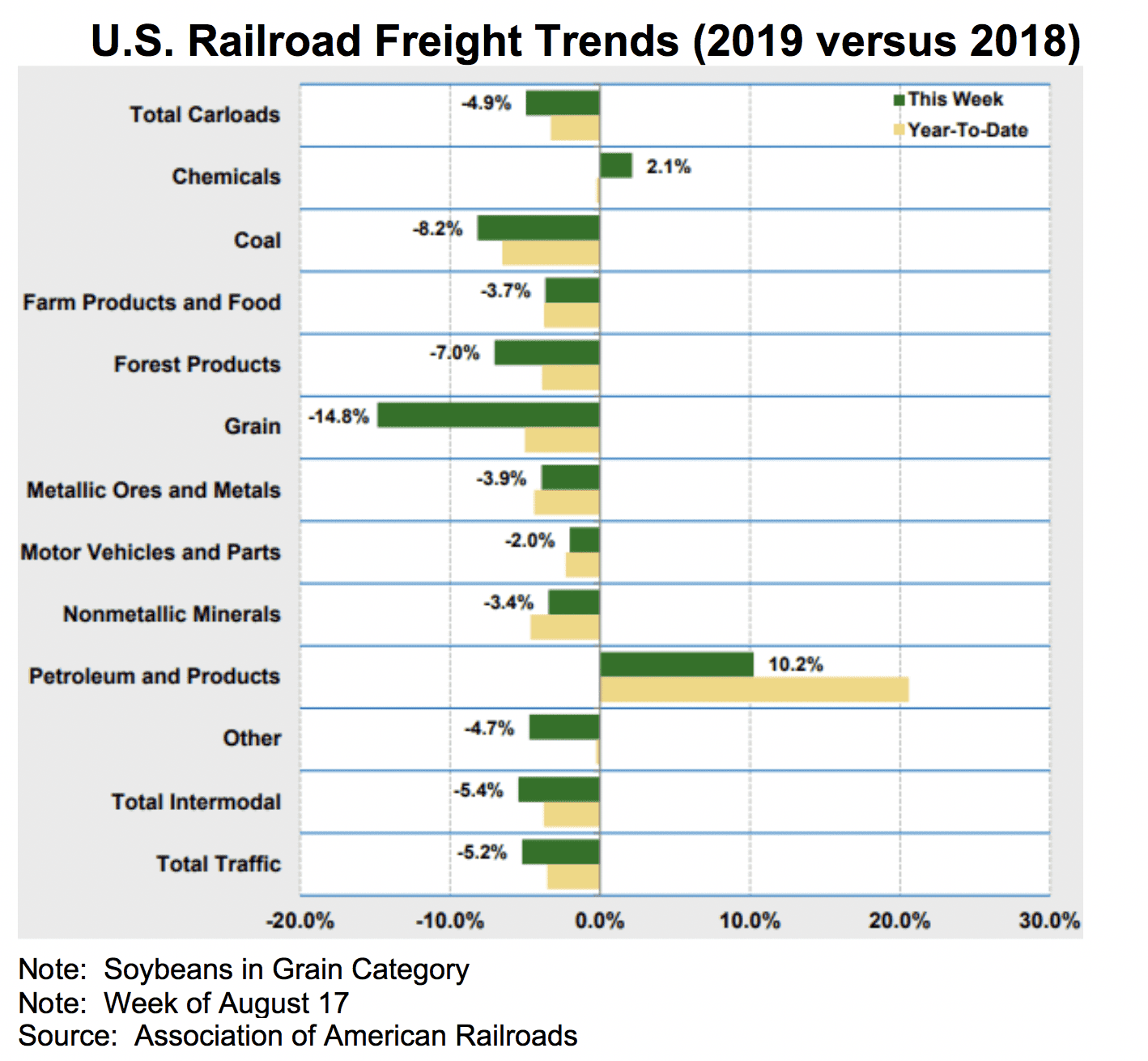Lock and Dam 27 at Granite City, Illinois is below where the Illinois River joins the Mississippi River but above St. Louis, Missouri. In addition to soybean barge movements in September through December being lowered by the China – U.S. trade war, the record amount of rain resulted in various segments of the Mississippi River being closed from March 16 till June 20. Now that the water levels are comparable with previous years, soybean barge movements are limited by maintenance projects on locks and dredging projects.

The theory that is often floated by opponents of investing in the Inland Mississippi River System is barge volume can easily be shifted to rail. In the short-run, railroads have already allocated resources that cannot be easily moved. Aside from relocating equipment, union labor also must be relocated. A more profitable option is to maximize volume on existing tracks and charge a higher tariff rate.
The reality is railroad companies are private entities that are primarily concerned with transporting cargo over their tracks. Railroad tracks are a major investment that often requires decades to turn a profit. As a result, the railroads are not going to make major investment decisions on short-term issues. Spending money that debottlenecks a choke point to allow more volume to move on existing track is clearly a priority.
The following table shows soybeans’ (in the grain category) rail volume through August 17 is down is 5% versus 2018. In addition to grain, other dry bulk product volumes are also down versus last year. The only positive categories are petroleum and petroleum products, and chemicals, of which both use tank equipment.

In the U.S. transportation system, other transportation modes rely on the Inland Mississippi River System to move large bulk commodities. The idea that rail can “easily” handle an annual increase of over a half billion short tons of volume is simply a false statement. Having access to the Inland Mississippi River System is an important competitive advantage that helps U.S. soybean farmers compete in the world market. The financial health of the American farmer is directly linked to the Inland Mississippi River System.
